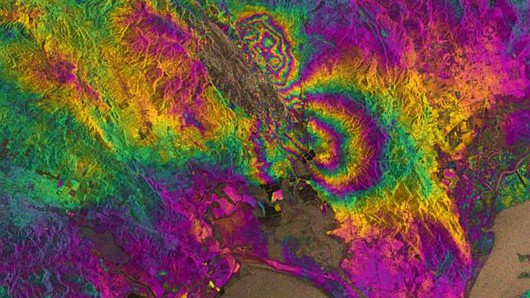
The technique uses satellite radar imagery to observe ground displacement, giving researchers rapid insights into the impact of earthquakes (Image: ESA/University of Iowa)
Researchers from the University of Iowa and United States Geographical Survey (USGS) have developed a method of using satellite and GPS data to characterize earthquake fault lines in real time, helping to deliver aid more accurately and with greater speed than current systems allow.
The key goal of the study was to create an earthquake rapid response system that didn't rely on ground-based equipment such as seismometers which, aside from their need to be physically deployed, do not produce consistent levels of detail when monitoring differing events around the globe.
The team used the magnitude 6.0 earthquake in South Napa, California on August 24, 2014 as a testbed for the new technique, utilizing satellite measurements recorded in real time. The observations were run through a mathematical equation that inverted the ground displacement data to create a 3D fault slip map.
This 3D map, which detailed the location, orientation and dimensions of the fault, was then compared with predictive models, with the team iterating the comparison process many times until the estimated ground deformation signal matched the observed data.
The 3D knowledge acquired through the new procedure, which facilitates the full characterization of a fault line within as little as 24 hours, allows for accurate predictions of ground shaking without the need for on-site instruments.
This in turn allows for refined estimates of the impact of the event on both infrastructure and on the human population. The team believes that the new method will be most useful in the developing world, where the details on the impact of an earthquake take longest to gather using existing techniques.
"On an international scale, it dramatically reduces the time between when an earthquake happens, when buildings start to fall down, and when aid starts to show up," said University of Iowa assistant professor William Barnhart.
Source: University of Iowa
copyright © Gizmag 2003 - 2015